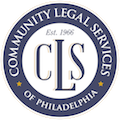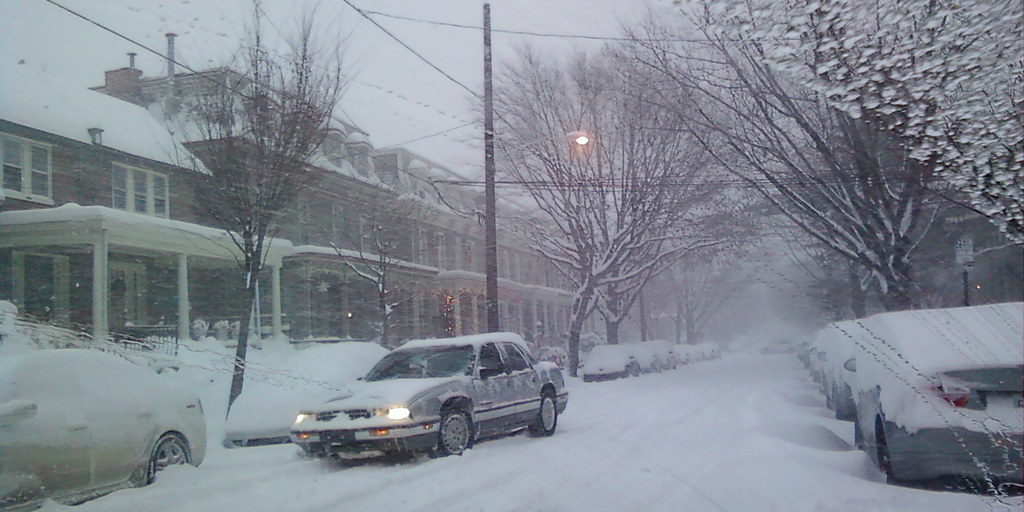Racial and economic disparities in affordable housing existed long before the COVID-19 pandemic, and yet, new data from the US Census Bureau suggest that the pandemic and the ensuing economic fallout are only widening these divides. When paired with a global pandemic, we anticipate a national wave of homelessness that will be unstoppable if landlords retain control of Philadelphia.
Historically redlined neighborhoods are those most affected by poor policy. Eighty years ago, neighborhoods considered high-risk or “hazardous” were redlined by lending institutions, denying them access to capital investment, which could improve the housing and economic opportunity of residents. The hazardous areas were the ones local lenders discounted as credit risks, in large part because of the residents’ racial identity. Meanwhile, governments encouraged planned obsolescence, making way for eminent domain, tax foreclosures, and evictions, which robbed many Black families of their wealth and future.
In analyzing renter stress and the impact of evictions, this report focuses on Philadelphia’s historically Black neighborhoods. Racial composition was a significant predictor of the “Residential Security” maps created by the Home Owners’ Loan Corporation (HOLC) in the 1940s. Many neighborhoods were labeled “hazardous” or “high risk” because Black people and other ethnic minorities lived in them, including large swaths of West Philadelphia and South Philadelphia. Over time, these neighborhoods were further stripped of resources, which led to a vicious cycle of neglect based on race considerations.
While Philadelphia has historically been known as a city of homeowners, the 2008 foreclosure crisis increased the number of renters, and consequently the need for affordable housing. Most of the city’s severely rent-burdened residents are overwhelmingly Black and Latinx. It’s not a coincidence, then, that who gets evicted from rental housing falls along racial and gender lines – most frequently impacting Black women and their children, and in Philadelphia, impacting Black families disproportionately in spite of their level of income or education. The loss of housing can be the catalyst for a downward spiral for those already living in poverty and is in fact a cause of poverty. Families who experience homelessness or housing instability have difficulty staying connected to public health benefits programs like Medicaid and keeping up with preventive care. Interruptions in coverage and care push families into emergency rooms in times of crisis, driving up health care costs for the community as a whole. Homelessness or precarious housing arrangements put family members at risk of trauma or abuse, leading to behavioral health problems that cut across generations.
Philadelphia is also experiencing rapid gentrification in areas of opportunity – that is, areas close to schools, jobs, transportation, and grocery stores. As a result, lower income families are forced to travel further and spend more to maintain employment, health and schooling, forcing families to deprioritize preventive or maintenance health care, and making families and communities sicker as a result. The housing that is available to lower income families is often substandard, posing major risks to health and safety, and causing housing instability as families try to escape hazardous situations. Children with asthma are particularly at risk in substandard housing conditions because common issues such as mold and infestation are direct triggers for asthma exacerbation. Housing advocates frequently hear from families who fear for their children’s health because of the conditions of their home. Philadelphia has been recognized as one of the most challenging places to live for children with asthma. Started in 2017, the Home Preservation Initiative for Health Living (HPI) has been combining home repairs with Community Asthma Prevention Program’s (CAPP) home visit program to reduce asthma-related emergency department visits. Due to early success, the program has received additional funding to expand their efforts, “ultimately striving to make a strong case for Medicaid reimbursement for home repairs in order to keep kids healthy and out of the hospital”.
The COVID-19 pandemic has significantly exacerbated the difficulties facing Black women, seniors, people with disabilities, queer and transgender people, and others who routinely face housing instability due to systemic oppression and racism, and has demonstrated the need for a tailored approach that takes into account the disease’s disproportionate impact on Black communities in particular. In May 2020 the Philadelphia Inquirer reported that in Philadelphia, Black patients are dying from COVID-19 at a rate more than 30% higher than the death rate among white patients. In July, it further reported that Black and Hispanic women in Philadelphia are being infected at rates five times higher than white women.
The current eviction crisis is a collision of disastrous forces – government-sponsored disinvestment and gentrification in historically Black communities, and an unethical response to the coronavirus pandemic. Already faced with significantly higher rates of infection and death among Black adults and children, Black people in Philadelphia are routinely denied access to housing and other resources that make it possible to build a future. Landlords and property managers continue to illegally evict tenants and are failing to address environmental hazards in their properties, using the state’s pandemic restrictions to justify their benign neglect.
This report was commissioned by Community Legal Services of Philadelphia to identify whether Black and other communities of color throughout Philadelphia are experiencing high rates of COVID-19 diagnosis and death and to what extent these same communities are experiencing or at risk of eviction and other forms of housing instability and/or grappling with other health and housing-related issues. The report identifies and analyzes various relevant data and provides a high-level analysis of related trends in Philadelphia, utilizing both qualitative and quantitative data. The analysis is meant to inform the development of a racial justice strategic plan for housing justice advocates that gives them a sharper understanding of the systemic racial justice issues that informs access to health and housing instability in rental housing.
Research was conducted by an independent team of researchers, all Black women living in West Philadelphia. Lead researcher Rachelle Faroul is a queer Black woman from Brooklyn, NY, and Research Assistant, Abigail Brown, is a student at Cabrini University. Researcher Rashni Stanford, M.S.W, supported the design of the renters survey and focus groups.
We have a shared understanding and sense of urgency around the continued housing crisis and are committed to a housing guarantee for all. We know that truly transformational work builds power, skills, and knowledge in our communities. We believe that such ambitious goals require local theories, practices, and tools, and thus rely heavily on the theory of Black Quantum Futurism to build power in our communities.
An in-depth analysis of these issues, paired with data about the disparate impact of COVID-19 on Black people and people of color will allow housing justice advocates to better respond to Black and Brown clients who are in crisis due to the COVID-19 pandemic. Housing advocates can then plan enhanced community education, targeted outreach, collaboration with housing movement and activist groups, and improve client identification in the particularly affected identified communities, working to ensure that Philadelphians in these neighborhoods are aware of their rights and can access services as many programs continue to work remotely. Housing justice advocates can use these findings to support building consistent opportunities to connect with community groups, especially those led by Black people of color, to collaborate on developing solutions to the issues posed by the pandemic, health, and housing.
The report primarily addresses the following research questions:
- How prevalent is COVID-19 in Black neighborhoods and other communities of color?
- What is the rate of eviction filings and completed evictions in Black and other communities of color impacted by COVID-19? ?
- How prevalent are substandard housing conditions in Black and other communities of color impacted by COVID-19?
- Do neighborhoods with a high amount of public or low-income housing have higher rates of COVID-19 infections than other neighborhoods?
- How has COVID-19 affected renters’ ability to pay and maintain housing? Are there differences across race and geography?
- How do renters understand the historical and current changes occurring within their communities?
Summary of Findings
- To date, Black people account for 47% of all COVID-19 deaths in Philadelphia and across nearly all age groups, Black residents are more likely to contract COVID-19 than white residents in Philadelphia. Systems of racial violence compound upon each other to make Black people more “structurally susceptible” to contracting and dying from COVID-19.
- Since the pandemic began in Philadelphia in March, through December 2020, landlords have filed to evict more than 2,760 families. Landlords have targeted renters in Black neighborhoods in North Philadelphia and West Philadelphia, in particular.
- Many of the areas with the highest COVID prevalence are also majority-Black communities experiencing high eviction rates.
- Of those renters surveyed, 17% of are now behind on rent since March 2020, compared to 7% before the shutdown began. Those currently struggling to pay rent are about 2 months behind (on average), while almost a quarter of all renters surveyed felt or were forced to move during the pandemic. The most common reasons for moving cited by renters were falling behind on rent, issues with the condition of the home (habitability), and intimidation from the landlord.
- The most prevalent habitability issues cited by respondents were mice and rats (44%), roaches (38%), flooding and water damage (31%), chipping paint (27%) and mold (23%) – all conditions that can cause respiratory issues or lead poisoning that make tenants more vulnerable during a pandemic.
- Only 32% believe their rent is affordable. About 47% of renters are concerned or very concerned about making rent and a quarter are concerned about being evicted in the next 4-6 months.
- 3% of those surveyed lost employment due to COVID-19, and nearly 60% have lost income (or hours worked) since the pandemic began.
- Renters were asked to share their experiences in and around their neighborhood since the shutdown began. Gun violence, construction/development, and anxiety (mental health episodes) were the experiences most shared.
- During the Health & Wellness section, renters broke down how the fear of not being able to make rent can impact an entire household. “Fear can kill you...You see every day how [government] systems discourage wellness.” Every single focus group participant has received mutual aid support since the beginning of the pandemic.
- Participants wondered aloud if the eviction fight is worth it. “You know you can’t manipulate time.” They’re in a constant fight to be a part of time, memory, and the future.






